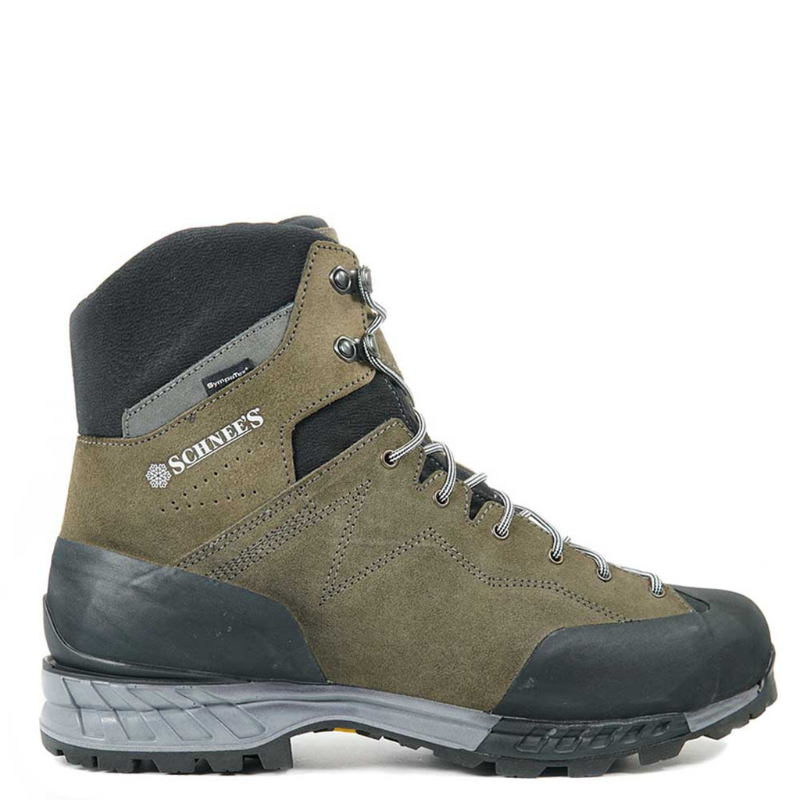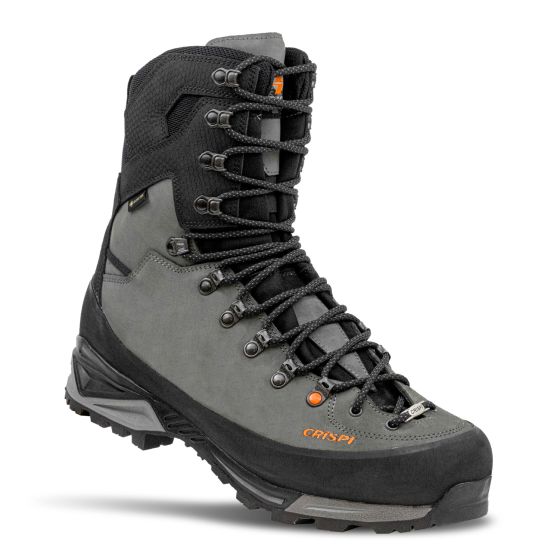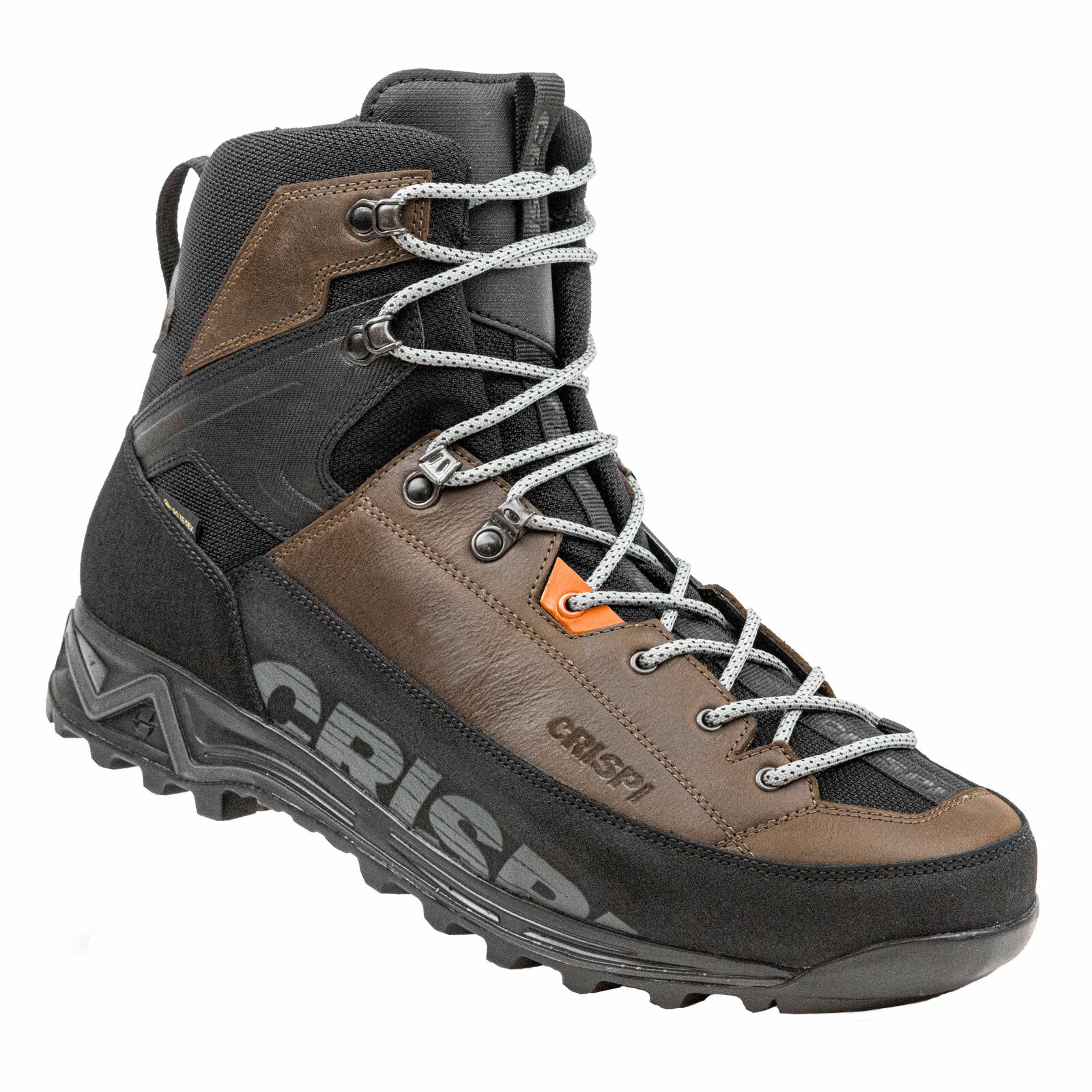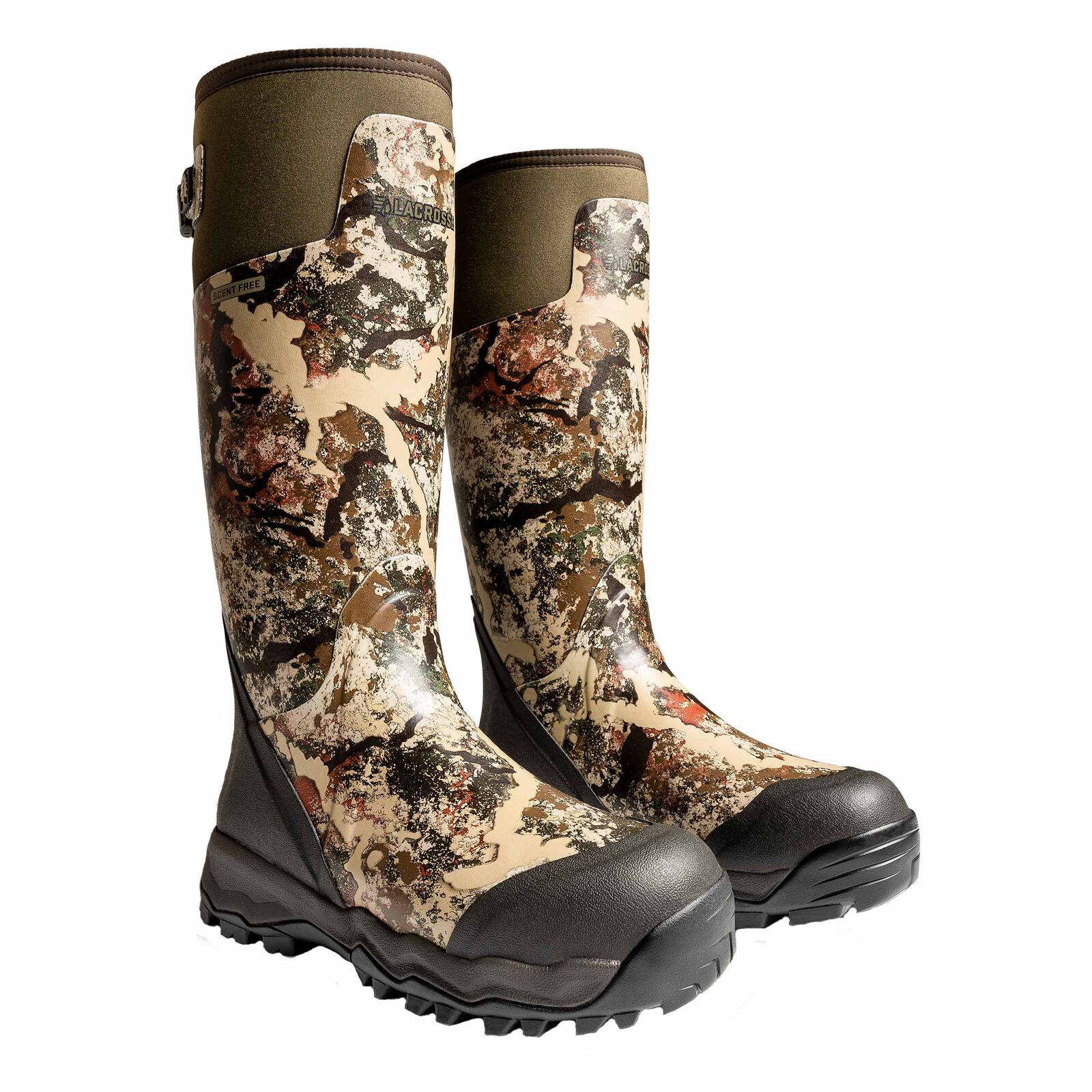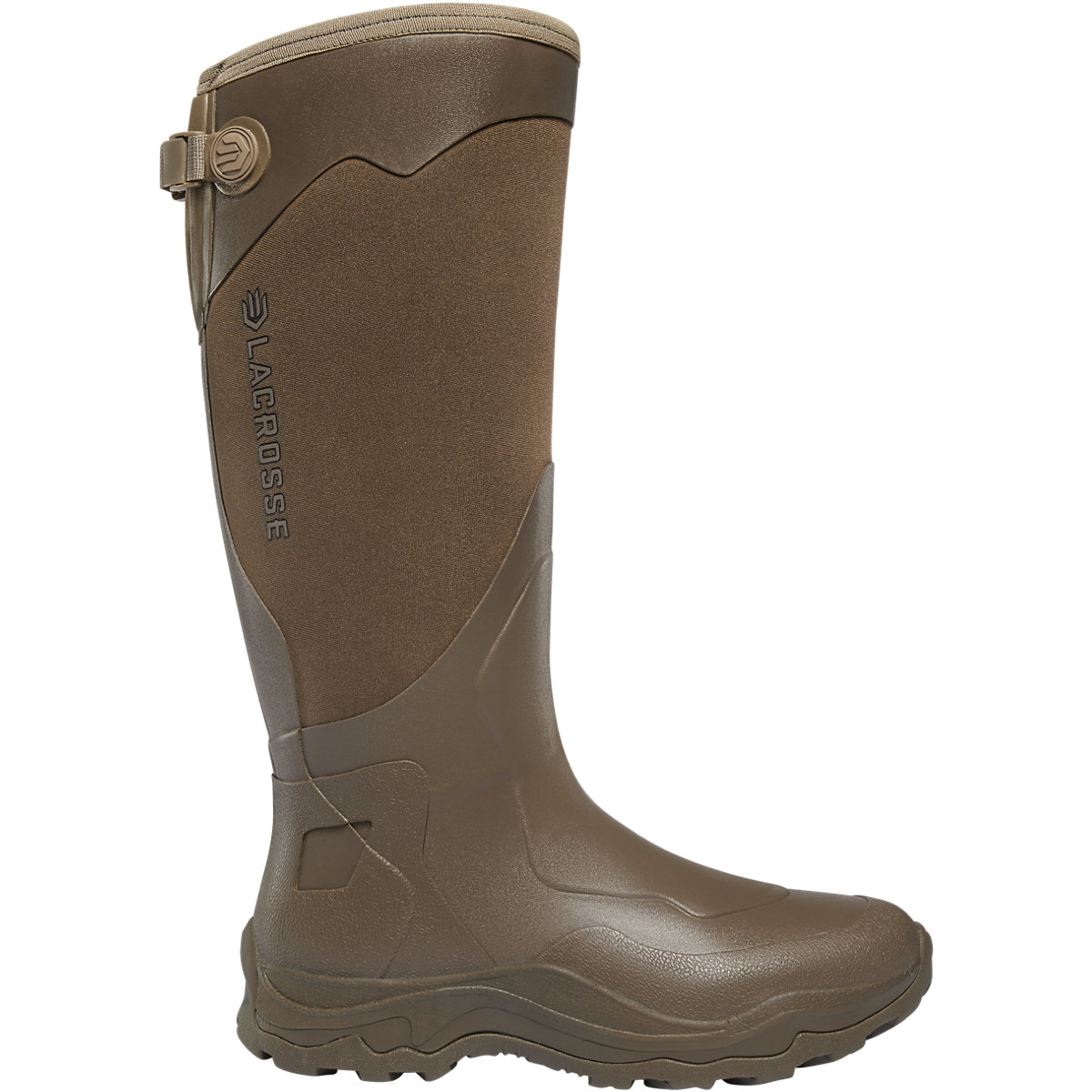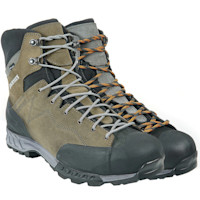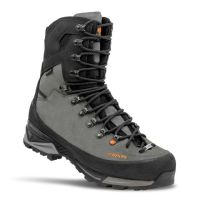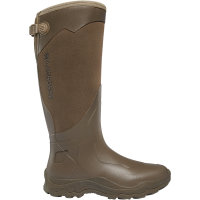
Hunting boots rank near the top of the necessary gear list. While there are places you can cut corners and save a few bucks, your footwear isn’t one of them. Whether you’re cresting the next ridge or braving the deer stand in sub-freezing temps, the right boots will keep you comfortable and warm in the field.
Unfortunately, there’s no one hunting boot for every game species. For elk in the backcountry, you’ll need a lightweight boot with plenty of stiffness in the upper to help you traverse steep, sketchy ground. Midwest whitetail hunters should probably opt for a heavily insulated rubber boot for those frigid late-season hunts. If you encounter different terrain or regions in a given season, you’ll probably need a few different pairs suited to the occasion. Luckily, the MeatEater crew has chased just about everything North America has to offer, so you’re bound to find something that works for you on this list. Here are our picks for the best hunting boots for a variety of hunting situations you might encounter.
Jump to: The Hunting Boots We Use
What We Look for in Good Hunting Boots
We’ve put plenty of pairs through abuse in all kinds of country and conditions. Some have held up, and others have been retired from our gear kits. But our top picks and all the best hunting boots have a few common characteristics.
- Comfort
- Waterproofness
- Performance-to-Weight Ratio
- Durability
We’re looking for a comfortable pair of well-built boots designed to protect our feet and stand up to everything the hunt throws at us.
Jump to: What Makes Good Hunting Boots
The Hunting Boots We Use
The MeatEater crew has logged hundreds of miles in these boots. They’ve taken a beating, endured the elements, and are still our top picks for the majority of outings.
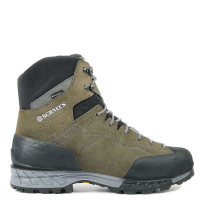 Schnee’s Kestrel
Clay and Cal’s Pick
|
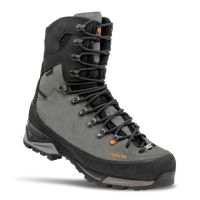 Crispi Birksdal Pro GTX
Steve’s Pick
|
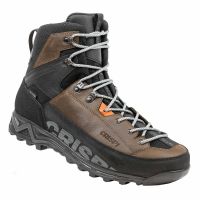 Crispi Altitude GTX
Janis’s Pick
|
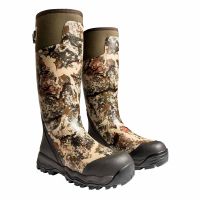 LaCrosse Alphaburly Pro
Tony's Pick
|
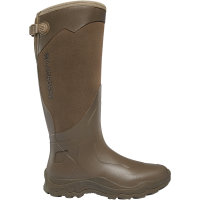 LaCrosse Alpha Agility Snake Boot
Adam's Pick
|
|
|---|---|---|---|---|---|
| Highlight | Best All-Around | Most Versatile | Best Lightweight | Best for Whitetail | Best for Turkey Hunts |
| Material | Top grain leather/Schoeller fabric | Water-repellent Nubuk | Water-repellent Nubuk | Rubber/PU | Rubber |
| Waterproofing | Sympatex | GORE-TEX Insulated | GORE-TEX | Waterproof lining | Waterproof lining |
| Insulation | Uninsulated | 200g | Uninsulated | Uninsulated | Uninsulated |
| Height | 6 in. | 9 in. | 8 in. | 18 in. | 17 in. |
| Weight | 3.4 lbs. | 4 lbs. | 2.9 lbs. | 4.8 lbs. | 4.9 lbs. |
| Price | $389* | $500* | $355* | $190* | $210* |
| Field Notes | Field Notes | Field Notes | Field Notes | Field Notes |
What Makes Good Hunting Boots
Rubber boots that keep toes toasty in the treestand won’t work for warm-weather hikes through the backcountry and vice versa. But all good hunting boots should have a few things in common.
1. Comfort
Nothing can wreck a hunt like ill-fitting boots that give you painful blisters. A great hunting boot will provide the support you need without digging into your skin or rubbing your heels raw—and with minimal break-in time. What’s comfortable for one hunter could kill another’s feet. Stick to boots designed for your individual needs, whether you have wide or narrow feet and flat or high arches.
2. Waterproofness
Some boots can repel a light mist, but others will keep your feet bone dry in a deluge. Wet socks can rub your feet raw, freeze out your toes, and make moving just generally unpleasant. Especially if you’ll be crossing creeks, hoofing it in unpredictable conditions, or toughing it out in frigid temps, look for a pair of boots with fully waterproof construction.
3. Performance-to-Weight Ratio
Whether you prioritize a rigid design for scaling technical terrain or a well-insulated style built for sub-freezing sits, it’s essential to strike the right balance between the performance you need and the overall weight of the boots. Heavy, bulky boots can slow you down and make maneuvering difficult. But good hunting boots will offer the features and coverage the hunt demands without becoming a burden.
4. Durability
The best hunting boots can shield your feet and ankles from thorns, burrs, briars, rocks, and more without tearing or falling apart. High-quality materials and rugged construction engineered to take seasons of abuse will prevent soles from separating and your feet from being exposed.
Breaking in Your Hunting Boots
Even the best-made hunting boots can rub your feet the wrong way if you don’t find the right fit and break them in properly before hitting the field.
Buy new boots early so you have plenty of time to get them ready to hunt. When shopping, try boots on with the same socks you’ll be wearing in the field. If you’re ordering online, measure the length and width of your feet and compare them to the manufacturer’s sizing chart—you likely won’t wear the same size from brand to brand.
Begin wearing your new boots around the house right away, again with the socks you’ll wear while hunting. Put them on when you rake the yard, run errands, or walk the dog.
Slowly work up to sliding them on before scouting trips or longer-distance hikes with a weighted pack. Note any potential places where hotspots or blisters could occur—use moleskin or Leukotape here to help prevent problems on the hunt.
You can treat stiff, tight leather uppers with a conditioner or softener for more give. If the fit still isn’t quite right after weeks of wear, consider swapping out your socks or investing in insoles for a more tailored fit.
Field notes from the MeatEater Crew
Clay’s & Cal’s Pick
Best All-Around
A boot that’s rugged, relatively lightweight, waterproof, and easy on the feet checks just about all the boxes for the bulk of warm-weather jaunts. Both Clay and Cal reach for these boots for most of their pursuits.
"I love the Schnee’s Kestrel. Light, compact, and rigid, I wear them almost every day," Clay said.
The pLite midsole provides support and shock absorption without weighing feet down, while a mix of mountain-proven leather and stretch Schoeller fabric keep feet comfortably protected.
"They’re easy to break in yet rigid enough to hike any coulee or mountain on my radar," Cal said. "By far my favorite boot for 90% of my hunting season."
Pros
- Lightweight
- Rigid enough for varied terrain
- Easy to break in
Cons
- Shorter boot makes river crossing more challenging
Specifications
- Material: Top grain leather/Schoeller fabric
- Waterproofing: Sympatex
- Insulation: Uninsulated
- Height: 6 in.
- Weight: 3.4 lbs.
- Price: $389
Steve’s Pick
Most Versatile
"Lately I’ve been hunting with Crispi’s Briksdal Pro GTX. It’s a good stiff boot, which I like, but it’s not so stiff that it takes a week to break in," Steve says. "I was surprised by how comfortable they are out of the box. What most impresses me is the waterproofing. Even after a full day wading through melting snow, the Briksdals remain bone dry."
Pros
- Durable waterproofing
- Grippy Vibram soles
- Stiff uppers
Cons
- Some might prefer uninsulated
Specifications
- Material: Water-Repellent Nubuk
- Waterproofing: GORE-TEX
- Insulation: 200g
- Height: 10 in.
- Weight: 4 lbs.
- Price: $500
Janis’s Pick
Best Lightweight
"These days, my go-to is the Crispi Altitude," Jani says. "It's a light boot that dries fast and allows me to 'run' if needed. Most importantly, the soft material makes for silent stalks. It's a trade-off, though. A light, soft boot doesn’t provide a ton of support when you’re carrying an elk quarter out of the mountains, especially off-trail. But it does help you get close enough to loose an arrow. I choose to suffer a bit during the packout because, ultimately, my goal is to kill an animal."
Pros
- Lightweight
- Quick-drying
- Quiet material
Cons
- Lacks the support of stiffer boots - especially on pack-outs
Specifications
- Material: Water-repellent Nubuk
- Waterproofing: GORE-TEX
- Insulation: Uninsulated
- Height: 8 in.
- Weight: 2.9 lbs.
- Price: $355
Tony's Pick
Best for Whitetail
"The LaCross Alphaburly 18" boots are my go-to hunting boots for all of my whitetail hunts," Tony says. "In fact, they’re comfortable enough for me to wear shed hunting, scouting, hanging stands, and doing just about anything related to deer. Not only do you get the scent-free(ish) benefits from these boots, but if you hunt around water a fair amount, you’ll stay dry while crossing smaller streams and other waterways. Hell, I even wear them on a lot of my pheasant hunts where I might log 25,000-plus steps in a day."
Pros
- Scent-free(ish)
- Comfortable
- No Maintenance
- Durable
Cons
- Breathability
- Not great for truly cold temps
Specifications
- Material: Rubber/PU
- Waterproofing: Waterproof lining
- Insulation: Uninsulated
- Height: 18 in.
- Weight: 4.8 lbs.
- Price: $190
Adam's Pick
Best for Turkey Hunting
"I spend my springs chasing turkeys across the deep South, where you’re just as likely to encounter a number of venomous snakes as you are a gobbler," Adam says. "I don’t mind snakes, but the snake guard on the Alpha Agility Snake boots provides a little peace of mind when you’re sloshing through swamps in the dark. Unlike other rubber boots, these have streamlined lowers that feel about as nimble as a rubber boot can. This smaller profile makes them great for sneaking through the turkey woods, and they won’t weigh you down on all-day run-and-gun affairs."
Pros
- Snakeproof lining
- Waterproof
- Smaller profile for a rubber boot
Cons
- Specific application
Specifications
- Material: Rubber
- Waterproofing: Waterproof lining
- Insulation: Uninsulated
- Height: 18 in.
- Weight: 4.9 lbs
- Price: $210


